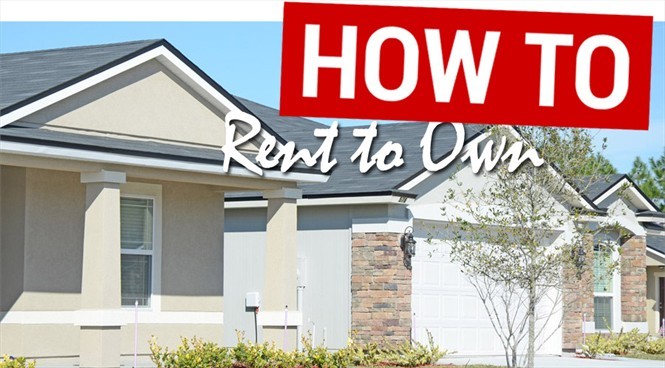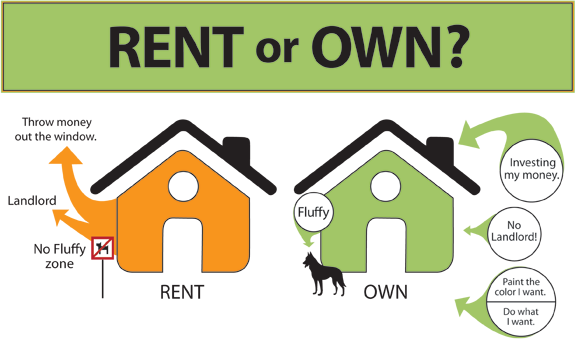Who Should Buy Rent To Own
Post on: 16 Март, 2015 No Comment

Investopedia 1/27/2015 Jean Folger
Thinkstock A brief clear explanation of how rent to own works and what are the most typical assets in this purchasing strategy (homes, cars, furniture, etc)
According to the Association of Progressive Rental Organizations, the rent-to-own business is an $8.5 billion industry. The rent-to-own transaction became popular in the 1970s as a way for consumers to acquire household goods – including furniture, electronics, major appliances, computers, instruments and jewelry – without having to pay full price up front or use a credit card. Over the years, the rent-to-own industry has grown to include fine art, bicycles, storage sheds, riding lawn mowers, and even wheels and tires. Here, we take a brief look at how rent to own works, and what consumers should know about it.
How Rent to Own Works
There are currently about 10,100 rent-to-own stores in operation in the U.S. Mexico and Canada, serving 4.8 million customers each year. As a renter, you enter into an agreement with one of these stores, make regular rent payments – either by the week or month – and after a predetermined number of payments, the item is yours to keep. Unlike a normal retail credit sale, there are no credit-history checks, and you can return the item at any time. Many stores promote that “everyone’s approved.” For example, one large rent-to-own chain advertises: “You are pre-approved for up to $2,500 in merchandise without needing credit.
Most stores offer several options:
- Buy it now – you pay a listed cash price to own the item right away.
- X days same as cash – you pay off the cash price in X days (such as 90 days) with no additional fees.
- Rent-to-own – you rent the item by the week or month for as long as you want, and eventually own it if you make enough payments.
If you pick rent to own and make all the payments necessary to own the item, you will ultimately pay up to several times the actual retail cost of the item.
For example, the buy-it-now price for a 40” Smart LED TV at a chain rent-to-own store is listed at $899.99. If you were to rent to own the same TV, you would pay $59.99 a month for 24 months, or $1,439.76. Add in the “service fee” and your payment would actually be $65.98 each month, or $1,583.52. The same TV could be purchased online at a major retailer for $629.90 with free shipping.

But most people don’t keep what they rent. Industry research shows that over the past 20 years, the majority of rent-to-own customers return their products with four months. Even though the cost of rent to own is very high compared to buying the product directly, very few people end up owning the item. According to the Association of Progressive Rental Organizations:
- 75% of consumers return the rented item within the first four months
- 17% exercise an early-purchase option or “same days as cash” option
- 8% make rent-to-own payments to full term
According to the same organization, many rent-to-own companies have begun to offer competitive cash prices, lower payment terms and early pay-off options to attract more customers and compete with traditional retailers. Still, it’s prudent to do your research and price shop before signing any agreements. You might be better off saving up for a few months to purchase the item outright instead of entering a rent-to-own agreement.
Rent-to-Own Homes and Cars
Consumers can also take the rent-to-own route to purchase homes and automobiles. These agreements, however, differ from those found in rent-to-own stores. The primary difference is that with a home or car, the renter must make a “down payment” of sorts: In a real estate transaction, this is referred to as option money. and it’s cash paid by the buyer to the seller for the option (or right) to purchase the house in the future. You pay rent for a set period of time (usually one to three years), and at the end of the lease, you can exercise your right to buy the house (for a price that is established in advance, or at the current market value, whichever is stated in the contract). If you decide not to purchase the house, you can walk away, but you lose the option money and any portion of the rent you paid that earned you a credit towards the purchase price. See Finding Rent-To-Own Homes .
In a typical rent-to-own agreement for a car, you put money down, make payments each week (or every two weeks), and at the end of the term, the car is yours. In general, you end up paying more for the car because of the higher price tag and fees, including taxes and late payment charges. This leads to high default rates, and auto dealers are often able to resell a car multiple times because of frequent repossessions.
A Time and a Place
Even though rent-to-own stores typically don’t represent the best deal – for either outright purchases or rentals – they may be a good option if you don’t plan on needing an item for very long. If you are renting an apartment for a just a few months, for example, it might make sense to rent your furniture, TV and other items. It’s also a reasonable option if you have bad or nonexistent credit and you are unable to qualify for a loan or line of credit.
Of course, rent to own is not the only option. If you are willing to buy used items, you can get them at garage sales, flea markets, or through your local newspaper, Craigslist or eBay for fraction of what they cost new. You may even be able to find what you need through the Freecycle network, a non-profit organization that connects people who have stuff they don’t need with people who could use it (all the items are free).
The Bottom Line
Before you buy that item from a rent-to-own store, check out the alternatives. And do the math so you know what it will ultimately cost you if you decide to keep it.














